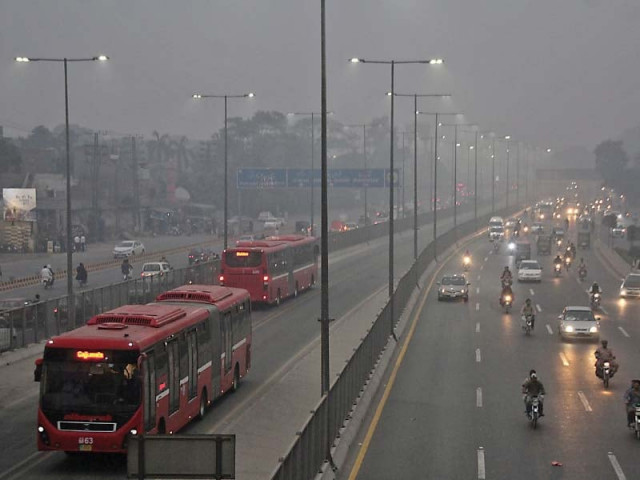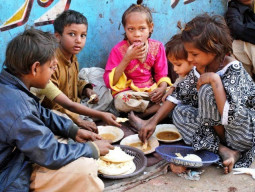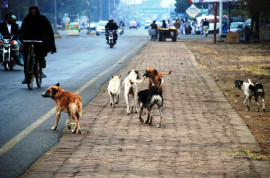
Come late October, the city is engulfed with smog and this has been the case for the last few years during the late fall and early winter season.
According to recent research, the gradual built up of smog is a result of rampant and unchecked carbon emissions from multiple sources such as vehicular and industry emissions, coupled with rice residue burning in the Indian and Pakistani Punjab region.
In the wake of the recent smog built up, the Punjab Environment Protection Department sprung in action and held a press conference. As she spoke to the media, Provincial Environment Minister Begum Zakia Shahnawaz said the issue was not only limited to Punjab, but had engulfed a significant part of South Asia.
The minister claimed the situation in neighbouring Indian Punjab was far worse and has been increasing due to the burning of rice residue. She said that the situation was exasperated by the wind direction from east to west, which puts further pressure on the environment in western Punjab.
According to Environment Protection Department Secretary Saif Anjum, smog buildup can also reach the Khyber-Pakhtukhwa region given the weather conditions. Anjum added that during the coming days, the situation was likely to remain the same or might even get worse in terms of reduced visibility.
Commenting on relevant measures to control the situation, the secretary added 197 FIRs have been registered against farmers who were found burning their rice residue, while 65 growers were arrested. He said that apart from legal action, the department has also launched an awareness campaign to curtail residue burning.
According to Saif, during the last one week, 15,178 smoke-emitting vehicles were also fined. Moreover,, as many as 175 factories and smoke emitting units have been closed, while 35 factories were charged with FIRs for not complying with emission standards.
Sectary EPA admitted that environmental pollution has increased over the past few years and there is a pressing need to adopt sustainable practices.
Commenting on these measures, Lahore Baachao Therik Convener and Lahore Conservation Society member Imrana Tiwana rubbished the ministry’s claims.
She said it is high time that the government takes the wellbeing of people seriously. Calling it a national emergency that has reached catastrophic levels, Tiwana added the negligence on the part of departments concerned could constitute a criminal offence.
The social activist said there were no signs of the government seriously implementing environmental safety policies. “Now when the lives of people are at risk, the ministry is resorting to excuses.
“Focusing on the industries, vehicular emission laws, uncontrolled and mismanaged urbanisation doesn’t seem to be a priority of government departments. It is simply a matter of taking very simple steps to avoid this situation,” Tiwana said.
“As far as the issue of carbon emissions from India is concerned, it is one of the many contributing factors. I am sure it is as much of a problem for them as it is for us since the matter of carbon emissions is a global issue and not limited to just one region,” Tiwana added.
Burning rice residue
In a research paper titled “Why Do Farmers Burn Rice Residue? Examining Farmers’ Choices in Punjab, Pakistan”, it was found that the total cost of handling rice residue and preparing wheat fields after rice, when farmers fully burn rice residue, is Rs3,424 (US$ 41) per acre. The research found out that the practice of burning costs substantially less than others such as using the residue as compost.
The paper was written by Forman Christian College Department of Economics Associate Professor Tanvir Ahmed and Innovative Agriculture Faisalabad President/Chief Executive Officer Bashir Ahmad.
The research found out that incorporation of rice residue, which is the next best alternative in terms of the cost of handling residue and preparing wheat fields, costs 20% more than the cost of a full burn. The researchers also noticed that the most important alternate practice of full residue removal, on average, is 34% more costly than simply burning the residue.
According to the research, with a total area of about 1.1 million hectares, rice/wheat cropping is the dominant cropping system in many districts in Punjab, Pakistan and approximately 80% of the wheat crop in the province is grown after harvesting rice.
Often, there is widespread late planting of wheat, especially when basmati rice is the preceding rice variety. Farmers burn rice residue as many believe it has a beneficial effect on yields.
The research suggests that growers who are burning their residue will need some form of incentive to move them towards rice residue incorporation, which is the next best alternative. Adopting full incorporation or removing pural and incorporating the lower parts of rice stem, however, requires investment in new planting equipment which needs to be subsidised.
The average subsidy required to incentivise farmers to move towards residue incorporation would be in the range of Rs674-908 (US$ 8-11) per acre. That is the difference between the average cost of fully burning and the average cost of full or partial incorporation of residue into the soils.
Published in The Express Tribune, November 4th, 2017.


















COMMENTS
Comments are moderated and generally will be posted if they are on-topic and not abusive.
For more information, please see our Comments FAQ